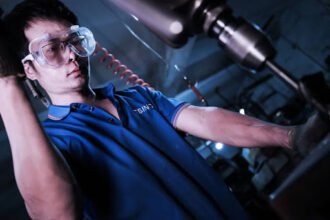Introduction to Lidarmos
In a world increasingly driven by data, the ability to “see” the environment with precision has become invaluable. Enter Lidarmos—a term that may sound futuristic, and rightly so. Whether Lidarmos refers to a proprietary LiDAR system, a niche technology brand, or a specialized application of light detection and ranging technology, one thing is clear: it’s making waves in the world of sensing, mapping, and autonomous decision-making.
LiDAR (Light Detection and Ranging) is a remote sensing method that uses light in the form of a pulsed laser to measure variable distances to the Earth. The idea behind Lidarmos is to expand or reimagine LiDAR’s capability, possibly incorporating smarter algorithms, more compact systems, or hybrid integrations that allow it to serve in multiple sectors—from self-driving cars to drone deliveries and even archaeological exploration.
What makes Lidarmos fascinating isn’t just the hardware. It’s the way it may be blending software, machine learning, and high-definition spatial awareness to offer ultra-precise data collection. Let’s dive into what Lidarmos is, what it does, and why it could be a game-changer in multiple industries.
The Technology Behind Lidarmos: More Than Just Laser Beams
At the core of Lidarmos is laser-based scanning technology. But while traditional LiDAR focuses solely on mapping physical environments through reflected light, Lidarmos seems to take this concept to another level—perhaps through enhanced resolution, improved range, or AI-backed interpretation of data.
Lidarmos systems likely incorporate several key components:
- Laser Emitters: These fire out pulses of light, usually in the near-infrared spectrum.
- Receivers/Detectors: These measure the time it takes for the laser to bounce off an object and return, calculating distance with incredible precision.
- Rotating or Solid-State Mechanisms: To capture 360-degree data or create dense point clouds.
- Integrated Processing Units: Where the real magic happens—converting raw data into usable information.
One aspect that might differentiate Lidarmos is its ability to merge sensor data in real time with contextual awareness. Imagine a Lidarmos unit on a vehicle that not only scans surroundings but also interprets them—distinguishing between a pedestrian and a lamppost, or between a pothole and a painted crosswalk. If true, this makes Lidarmos more than just a scanner; it becomes an intelligent sensor.

Applications Across Industries: Where Lidarmos Shines
One of the most exciting things about a technology like Lidarmos is its flexibility. It can be adapted for countless purposes, many of which extend beyond what traditional LiDAR can do. Let’s look at some key industries that could be transformed by this innovation:
1. Autonomous Vehicles
Self-driving cars rely heavily on LiDAR for navigation. A Lidarmos system, with enhanced capabilities, could mean the difference between safe navigation in rain or fog and catastrophic misjudgments. Its potential for faster processing, better object detection, and smarter decision-making makes it ideal for autonomous transportation.
Imagine a car equipped with Lidarmos that not only “sees” a cyclist but predicts the cyclist’s movement based on trajectory and speed. That’s a layer of intelligence that pushes driverless cars closer to true autonomy.
2. Drone Delivery and Aerial Mapping
In the realm of unmanned aerial vehicles (UAVs), weight and power consumption are huge concerns. If Lidarmos systems are smaller, lighter, or more energy-efficient than their traditional counterparts, they could revolutionize how drones operate—especially in complex urban environments or dense forests.
A Lidarmos-enabled drone could map a city with sub-centimeter accuracy, detect power lines, measure tree canopy heights, or navigate tight alleys for package delivery. That’s not just innovation—that’s a leap forward.
3. Construction and Infrastructure
Surveying a construction site used to take days or weeks. With Lidarmos, engineers could scan a site in minutes and generate precise 3D models in real time. This improves safety, reduces costs, and enhances design accuracy.
In infrastructure maintenance, Lidaros could inspect bridges, tunnels, or even rail lines for structural weaknesses before they become safety issues. Its potential here is not just practical but potentially lifesaving.
Challenges and Considerations: The Road Ahead for Lidarmos
As promising as Lidaros sounds, it’s important to recognize the hurdles any advanced sensing system must overcome. For one, cost is always a factor. Even as LiDAR systems have become more affordable over the years, cutting-edge versions with added intelligence often come with a hefty price tag.
Another issue is data overload. More precision equals more data, and without the right processing power or filtering mechanisms, that can be overwhelming. If Lidarms is to scale effectively, it must balance precision with efficiency—processing large datasets quickly, possibly using edge computing or advanced compression techniques.
Then there’s the challenge of integration. A Liarmos unit must work seamlessly with existing systems—whether that’s the onboard software in an autonomous car or a drone’s flight controller. Compatibility, software development kits (SDKs), and ease of use will be key factors in adoption.
The Competitive Edge: What Sets Lidarmos Apart?
So, why choose Lidarmos over conventional LiDAR systems? It likely comes down to a few critical advantages:
- Smarter Sensing: AI-enhanced interpretation of data sets Lidrmos apart. It’s not just sensing—it’s understanding.
- Modular Design: If Lidarms systems are modular, they can be adapted to various platforms—cars, drones, robots, satellites—without a full redesign.
- Durability and Resilience: In harsh weather or challenging terrains, Liarmos might outperform older systems with more robust shielding or internal error-correction features.
This competitive edge could also lie in software ecosystems. If Lidrmos includes cloud connectivity, auto-updating firmware, or APIs that developers can easily plug into their apps or robotics systems, it makes the tech far more appealing for startups and large enterprises alike.
Future Possibilities: Where Could Lidarmos Go from Here?
The future for Lidarmos seems wide open. As smart cities evolve, Liarmos could become integral to traffic management, pedestrian tracking, and even real-time urban planning. Imagine smart intersections that scan traffic volumes and adjust light cycles on the fly—or emergency services that use Lidrmos to plan optimal routes during a disaster.
In agriculture, Lidarms systems could scan fields, track crop health, and assist autonomous tractors. In retail and security, they might provide real-time spatial analytics in large stores or detect movement patterns in secure facilities.
And then there’s the environmental angle. From glacier monitoring to coral reef mapping, a Lidamos system could provide high-resolution data for climate scientists trying to model changes in Earth’s ecosystems.
Conclusion:
Lidarmos may be new on the tech radar, but it represents something much larger than just another gadget. It hints at a future where sensing isn’t passive but active—where machines don’t just collect data but interpret, react, and even make decisions based on it.
From improving how we move to how we build, protect, and explore, Lidrmos could be the intelligent eye of the digital world. Whether you’re a tech enthusiast, a developer, or just someone fascinated by the next big thing, this is one term you’ll want to keep an eye on.
The laser has evolved—and its name might just be Lidrmos.





